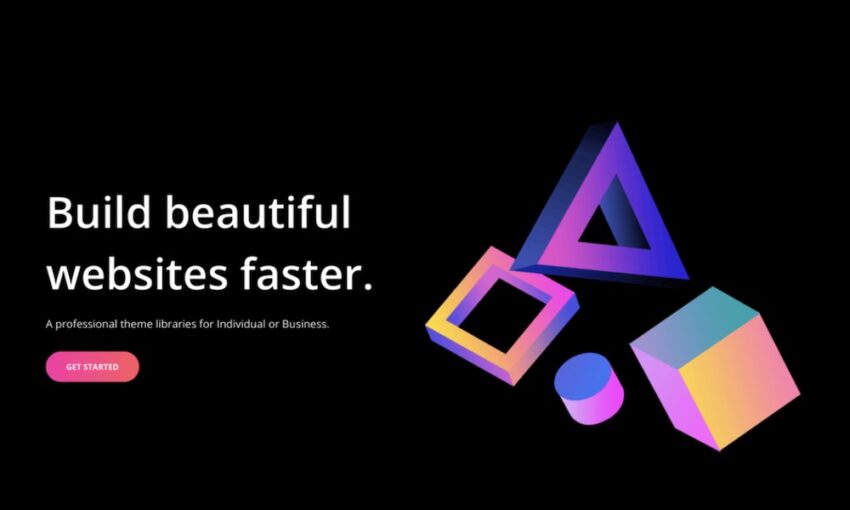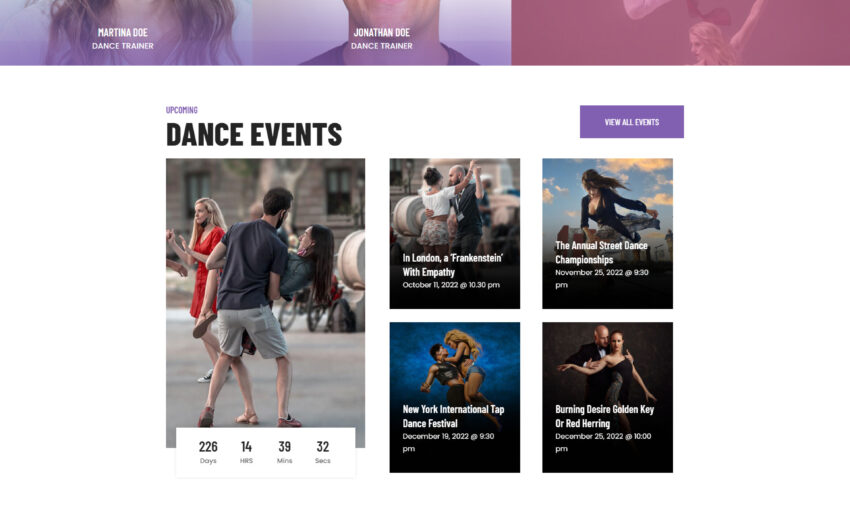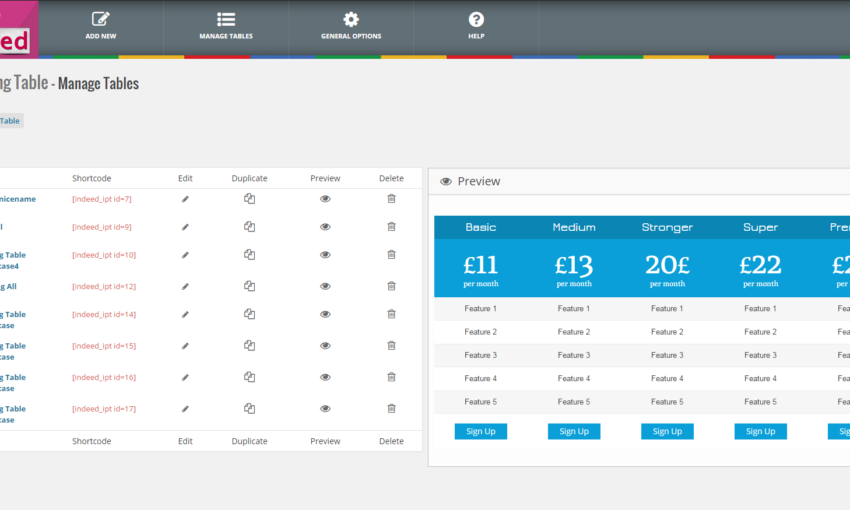WordPress is always on the move, with new features, top plugins and themes pushing new boundaries. But 2017 has been, in particular, a noteworthy one for the open source CMS.
Sure, we’ve had our usual major releases – which we’ll get to in a bit. Beyond that, 2017 has stood out for the massive kerfuffle caused by something that’s not even officially part of the core software just yet.
Let’s take a look back at this landmark year in the world of WordPress:
Gutenberg Prints Up Controversy
Indeed, the still-in-the-works Gutenberg editor has been the biggest thing to hit WordPress since… maybe WordPress itself. For those not familiar with Gutenberg, it’s a fully redesigned and reimagined editing experience that is expected to be included in WordPress 5.0. Until then, you can take it for a test drive via an available plugin.
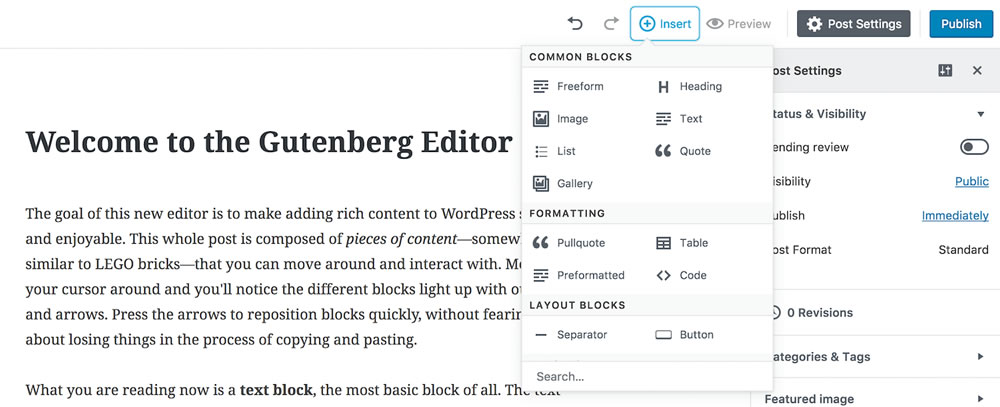
From what I’ve gathered, there aren’t a whole lot of people out there who are so in love with the current WordPress editor that they don’t want to see it go (although, it’s supposed to stick around in plugin form after WP 5.0 is released). But there has been much debate regarding whether or not the block-based Gutenberg is in the best interest of the WordPress community at large.
There are concerns about how it will affect custom meta boxes, the manner in which it handles data, its plan to use React (which it abandoned due to a licensing issue – although the licensing cleared up) and just about everything else. It’s hard to make a change this big without inciting some panic – legitimate or not. WordPress founder Matt Mullenweg , along with project leaders Matías Ventura and Andrew Roberts have sought to calm nervous members of the community.
Things have improved as the plugin version of the editor has added features and fixes on a weekly basis. And communication (one of the biggest issues in the early days of the project) between those creating the editor and those who will be using it has also gotten better. The bottom line is that Gutenberg is simply “too big to fail”. So many people use WordPress and have customized the back end. It makes no sense that those on the development team would allow massive amounts of websites to break. I’m optimistic that they’ll try and keep any potential issues to a bare minimum.
Gutenberg has already been a huge story among developers. But in 2018, look for it to repeat as the most popular topic. Only this time, the entire user base will be part of the discussion. That will be the determining factor on whether or not this project is a success.
Two Major Releases
2017 saw two major releases of WordPress:
4.8
Version 4.8, code named “Evans”, was released on June 8. This version focused on usability issues – especially with those long-in-the-tooth widgets. For years, the standard Text Widget had been bent and abused by users attempting to make it a fit for images or other media. Heck, formatting text even required the use of HTML code. 4.8 changed this with the addition of the Image, Video, Audio and Rich Text Widgets. This makes widgets easier to use and hopefully keeps them relevant to designers and content managers.
The other usability feature worth mentioning is the addition of link boundaries in the visual editor. This makes it much easier to see where a specific link begins and ends.
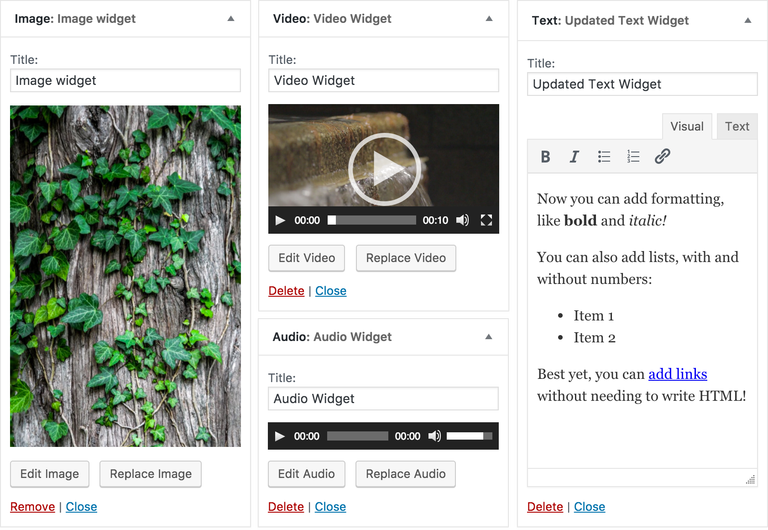
4.9
WordPress 4.9, “Tipton”, was released on November 16. The big to-do here is the improvements to the WordPress Customizer. It now allows for scheduling of design changes through the Customizer – the same as we’ve been doing with posts for years. Also added in are preview links that you can send to others – letting them see changes before they officially go live.
The theme and plugin code editor saw improvements such as error checking, syntax highlighting and a warning to users before touching code. And widgets continued their comeback with a new Gallery Widget and the addition of the Add Media button. Finally, we can add media to widgets without the need for writing HTML.
Malicious Code Found in Popular Plugins
One of the lesser-known stories of the year was that a rash of popular plugins were found to contain malicious code. The main source of the problem was that multiple plugins, including Display Widgets, Fast Secure Contact Form and SI CAPTCHA Anti-Spam had been sold to someone with less-than-pure intentions. Each of these plugins contained code that, unbeknownst to the user, would add spam posts to their websites.
Then in November, the Animated Weather Widget plugin was found to contain code that would mine a user’s computer for crypto currency.
While these incidents were somewhat isolated, it’s still a major concern. The fact that a previously trusted plugin can be turned into something harmful is something we all need to take seriously. Hopefully, 2018 brings us better ways to ensure that the plugins we install are safe.
Top WordPress Articles and Tutorials
Throughout the year, a number of outstanding WordPress articles and tutorials were published. Here are a few of our favorites:
Which WordPress Framework Should You Choose?
The many advantages of using a theme framework and an overview of popular choices.
Creating Better, Faster And More Optimized WordPress Websites
Some great advice on making your site the best it can be from the perspective of a web hosting firm.
How to Properly Add JavaScripts and Styles in WordPress
Adding scripts and styles is one of the most misunderstood aspects of theme development.
Principles of Secure WordPress Code
Writing secure code is an essential part of keeping your WordPress website’s data safe.
How to Speed Up Your WordPress Development With WP-CLI
Using the command line to run common tasks such as plugin updates can save you loads of time.
40 Cheatsheets & Reference Guides for WordPress
A collection of resources that covers everything from the basics to hardcore theme and plugin development.
Musings on a Decade of WordPress
Tom McFarlin’s observations of almost ten years in WordPress from themes, to plugins, news, education and more.
Best Practices for Managing Multiple WordPress Sites
Dealing with more than one WordPress site can be difficult. Here are some tips for keeping everything running smoothly.
Interview with Matt Mullenweg on the WordPress ecosystem
A timely look at what’s happening with WordPress, featuring the man himself.
How the REST API is Helping WordPress Evolve
The REST API is still an important piece of the puzzle for the future of WordPress.

A Banner Year…With More to Come
If WordPress were a sport, we might say that the bigger stories were the ones “away from the field”. The actual core software releases of the past year have been steady and stable, if not earth-shattering.
However, 2018 is shaping up to be a very exciting year. There is still much uncertainty about Gutenberg and the upcoming WordPress 5.0 – except that we know they’re coming. It’s been said that 5.0 won’t ship out until Gutenberg is completely ready for prime time. That’s the absolute right strategy. WordPress is way too important and backwards compatibility is too much of a necessity for anything to be rushed out the door.
Perhaps we’ll look back at 2017 as more of a transitional year in the history of WordPress: One that is setting up for something really big to come.
This post may contain affiliate links. See our disclosure about affiliate links here.
